Adventure Awaits: Your Comprehensive Travel Guide to Danxia Mountain
An Essential Guide to Visiting Danxia Mountain
Nestled in the heart of Guangdong Province, Danxia Mountain is a breathtaking testament to nature’s artistry, where vibrant red sandstone formations rise dramatically against the backdrop of a cerulean sky. This UNESCO World Heritage site is celebrated not just for its striking geological features but also for the kaleidoscope of colors that dance across its cliffs at sunrise and sunset, creating a mesmerizing spectacle that has captivated travelers and photographers alike. Here, the landscapes vary from lush greenery to stark, arid rock formations, providing an enchanting playground for adventurers and nature lovers.
In this essential guide to visiting Danxia Mountain, you’ll discover everything you need to know to make the most of your trip. From practical tips on how to get there and what to expect at the entrance to detailed itineraries for hiking the various peaks, this guide covers it all. We’ll explore the best times to visit, highlight must-see attractions within the park, and suggest nearby accommodations for your stay. Whether you’re an avid hiker or simply seeking to soak in the breathtaking views, Danxia Mountain promises an unforgettable experience that showcases the raw beauty of China’s natural landscapes. Prepare to embark on an adventure that will leave you in awe of the wonders of this captivating destination.
In This Guide
- An Essential Guide to Visiting Danxia Mountain
- The Rich History and Legends of Danxia Mountain
- Main Highlights: What You Absolutely Can’t Miss
- Planning Your Visit: A Practical Guide
- Tickets: Prices, Booking, and Tips
- How to Get There: A Complete Transportation Guide
- Local Cuisine and Accommodation Nearby
- Frequently Asked Questions
- Final Thoughts on Your Trip
The Rich History and Legends of Danxia Mountain
A Journey Through Time: The Rich History and Legends of Danxia Mountain
Origins of the Name
Danxia Mountain derives its name from the Chinese word “Danxia” (丹霞), which refers to the beautiful glow cast upon the clouds during sunset or sunrise. The term first appeared in a poem by Cao Pi, a notable figure from the Three Kingdoms era, reflecting the aesthetic appeal of this stunning landscape. The mountain itself is a part of the Danxia landform, characterized by its striking red sandstone cliffs and unique geological features.
Geological Significance
The unique geological formations of Danxia Mountain were first scientifically recognized in 1928 by Dr. Feng Jinglan, a geologist fascinated by the reddish sandstone. A decade later, Dr. Chen Guoda further developed the concept of the Danxia Landform, emphasizing its distinct characteristics and importance. These formations are not merely beautiful; they also provide a glimpse into millions of years of geological history, shaped by natural forces and showcasing a vibrant palette of colors that change dramatically with the shifting sun.
UNESCO Recognition
In 2010, the significance of Danxia Mountain was recognized on an international scale when it was designated a UNESCO World Heritage site. This accolade was awarded to six park areas in southern China, showcasing the unique traits of Danxia rock formations. The recognition underscores the mountain’s importance not just as a tourist destination but also as a vital part of Earth’s geological heritage.
Legends of the Mountain
The Tale of the Monkey King
One of the most famous legends associated with Danxia Mountain is the story of the Monkey King, Sun Wukong, from the classic Chinese novel “Journey to the West.” According to local folklore, it is said that the Monkey King once roamed the peaks of Danxia, using his magical powers to protect the mountain and its inhabitants from evil spirits. Travelers often report seeing rock formations resembling the Monkey King himself, adding a layer of myth to the already enchanting landscape.
The Buddhist Monks
Another captivating legend involves the presence of ancient Buddhist monks who ascended the mountain to seek enlightenment. It is believed that these monks established several temples along the hiking trails, where they would meditate and practice their teachings. Today, visitors can still see remnants of these temples, where monks are occasionally spotted, running up and down the stairs, embodying the spirit of devotion and perseverance.
Cultural Significance
Danxia Mountain isn’t just a natural wonder; it’s also a cultural hub. The mountain has been a source of inspiration for poets, artists, and scholars throughout history. Its breathtaking vistas and unique formations have sparked creativity and contemplation, making it a cherished locale for those seeking both adventure and spiritual reflection.
Conclusion
From its geological marvels to its rich tapestry of legends, Danxia Mountain offers more than just stunning scenery. It is a place where history and myth intertwine, inviting international travelers to explore its trails and uncover the stories etched into its rocks. Whether you’re hiking to the summit or simply soaking in the views, the legacy of Danxia Mountain is sure to leave an indelible mark on your journey through China.
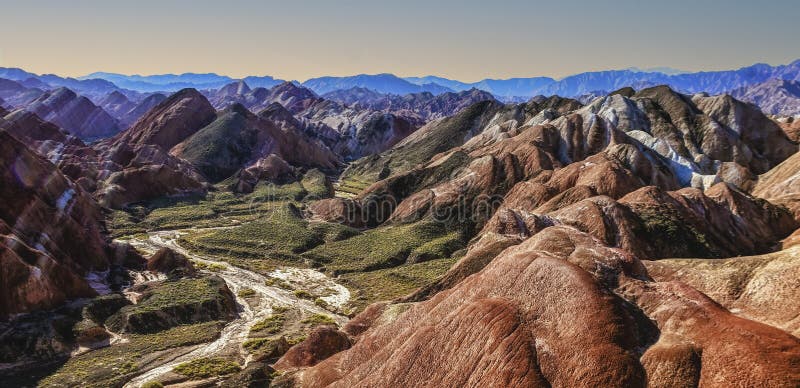
Danxia Mountain.
Main Highlights: What You Absolutely Can’t Miss
1. Elder Peak (老峰)
Elder Peak is the crown jewel of Danxia Mountain, offering breathtaking panoramic views that are simply unforgettable. The hike to the summit is both challenging and exhilarating, with steep staircases that will have your heart racing. As you ascend, take in the sight of the unique rock formations, each telling a story of ancient geological processes. Don’t forget to bring your camera; the views at the top are worth every step!
Practical Tip: Aim to start your hike early in the morning to avoid crowds and catch the sunrise illuminating the mountains. The round trip can take about 3 hours, so wear comfortable shoes and bring water.
2. Yangyuan Mountain Area (阳元山)
For a more tranquil hiking experience, head to the Yangyuan Mountain area. This part of the park is known for its serene landscapes and fewer visitors, making it a perfect spot for reflection and photography. The trails here weave through lush greenery, leading to stunning vistas of the surrounding landscape. Keep an eye out for the unique rock formations, some resembling animals and mythical figures!
Practical Tip: Plan to spend around 2-3 hours exploring this area, and consider bringing a picnic to enjoy amidst nature. The descent can be steep, so take your time and be cautious.
3. Danxia Scenic Area (丹霞景区)
The Danxia Scenic Area showcases a remarkable array of red sandstone cliffs that are iconic to the region. Here, you can witness the stunning colors of the rock formations, especially at sunrise or sunset when the landscape transforms into a brilliant palette. The area is also dotted with ancient temples, adding a cultural element to your visit.
Practical Tip: Wear sun protection and carry water, as some areas can become quite warm during the day. The entrance fee is around 100 RMB, valid for 24 hours, so consider spending a full day to explore.
4. The “Monkey King” Rock (齐天大圣岩)
One of the most whimsical rock formations in Danxia Mountain is the “Monkey King” Rock, named after the legendary character from Chinese folklore. This unique formation captures the imagination and is a favorite among visitors for photo opportunities. The rock’s shape is reminiscent of the Monkey King’s playful spirit, making it a fun stop on your journey.
Practical Tip: Bring a group of friends for a photo session here—it’s a great spot to capture memories! Aim to visit during the morning when the light is perfect for photography.
5. The Temples Along the Trail
As you hike through Danxia Mountain, you’ll encounter several ancient temples nestled among the cliffs. These temples offer a glimpse into the spiritual heritage of the area and a chance to rest while soaking in the serene atmosphere. The sight of monks going about their daily routines adds a unique charm to your adventure.
Practical Tip: Respect the local customs and consider learning a few phrases in Mandarin to communicate with the monks. This will enhance your experience and deepen your appreciation of the culture.
6. Scenic Viewing Platforms
Throughout Danxia Mountain, you will find several scenic viewing platforms strategically positioned to provide the best vistas of the landscape. These platforms are perfect for resting and taking in the beauty of the red sandstone formations. Some overlook the valleys below, while others provide a view of the peaks.
Practical Tip: Make sure to check the park map for the locations of these platforms. They are often less crowded than the main trails, providing a peaceful spot to enjoy your surroundings.
7. Local Wildlife and Flora
Don’t forget to keep an eye out for the diverse wildlife and unique flora that call Danxia Mountain home. From colorful butterflies to rare birds, the biodiversity here adds another layer of intrigue to your exploration. The combination of rocky terrain and lush vegetation creates a habitat for many species.
Practical Tip: Bring binoculars for birdwatching and a field guide if you’re interested in identifying different plant species. Early morning is the best time to spot wildlife, as they are more active before the heat of the day sets in.
Embarking on a journey through Danxia Mountain is not just about the sights; it’s an immersive experience that blends stunning natural beauty with rich cultural heritage. Make the most of your visit by exploring these highlights and engaging with the landscape, and you’re sure to create lasting memories!
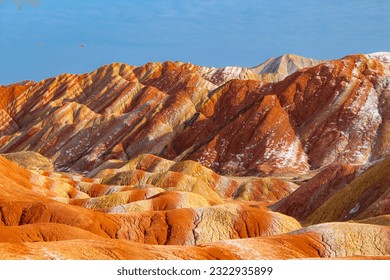
Danxia Mountain.
Planning Your Visit: A Practical Guide
Best Time to Visit
The ideal time to explore Danxia Mountain is during the spring (March to May) and autumn (September to November) months. During these periods, the weather is pleasantly mild, with temperatures ranging from 15°C to 25°C (59°F to 77°F), making hiking enjoyable. Summer can be hot and humid, with temperatures exceeding 30°C (86°F), while winter may bring chilly temperatures and occasional frost, particularly at higher elevations.
Recommended Itinerary
For a fulfilling experience, consider dedicating two full days to your visit.
Day 1:
– Morning: Arrive early and purchase your entrance ticket (approximately 100 RMB). Start at the Elder Peak, where you’ll enjoy breathtaking views. The hike can take around 3 hours.
– Afternoon: Explore the Yangyuan Mountain area, spending about 2 hours there. This section tends to be less crowded, allowing for a more peaceful experience.
– Evening: Capture the stunning sunset views, especially the vibrant colors reflected on the rock formations.
Day 2:
– Morning: Return to explore more of the Yangyuan Mountain area, which boasts beautiful trails and fewer visitors.
– Afternoon: Visit the various temples along the way, where you may encounter monks and local wildlife.
– Evening: Wrap up your visit by enjoying a local meal in one of the nearby restaurants.
Photography Tips
- Golden Hour: For the best lighting, plan your photography sessions around the golden hour—early morning and late afternoon. The red sandstone formations glow beautifully during these times.
- Wide-Angle Lens: Bring a wide-angle lens to capture the vast landscapes and unique rock formations in all their glory.
- Details Matter: Don’t forget to zoom in on textures and colors of the rock formations, as they can tell a story of their own.
- Patience: Wait for the right moment to photograph the landscapes without crowds. Early mornings or late afternoons are usually quieter.
- Experiment with Angles: Try different vantage points and angles to showcase the dramatic shapes of the mountains.
What to Wear
- Comfortable Footwear: Proper hiking shoes are essential as the trails can be steep and rocky.
- Layered Clothing: Dress in layers to accommodate varying temperatures throughout the day. A light jacket may be beneficial, especially during cooler mornings and evenings.
- Sun Protection: Wear a wide-brimmed hat, sunglasses, and sunscreen, as the sun can be intense, particularly in summer.
- Backpack: A small backpack for water, snacks, and personal items is recommended to keep your hands free while hiking.
Insider Tips
- Stay Nearby: Opt for accommodation near the park gates, preferably around the Yangyuan Mountain area. This will save you time and allow for easy access to the trails.
- Hydrate and Snack: Bring plenty of water and snacks, as some trails can be strenuous. While there are shops in the park, they can be limited.
- Visit During Off-Peak Hours: To avoid crowds, try to visit during weekdays or early in the morning, especially if you’re traveling during Chinese holidays.
- Mind the Trash: Keep the park clean. Bring a small bag for your waste, as litter can spoil the natural beauty.
- Engage with Locals: Take the opportunity to chat with local hikers and monks. Their stories and insights can enrich your experience of the area.
With its stunning landscapes and unique geological features, Danxia Mountain offers an unforgettable adventure for all who visit. Prepare well, and you’ll be rewarded with memories for a lifetime.
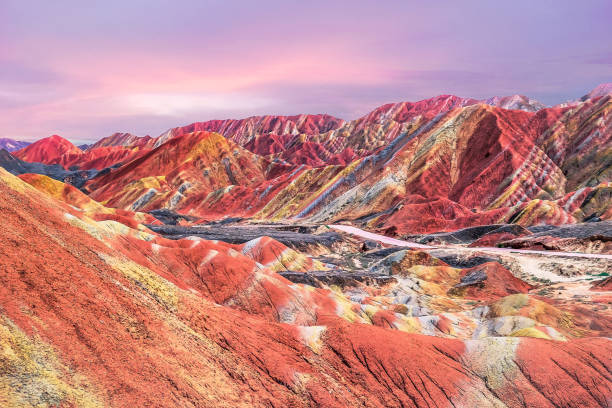
Danxia Mountain.
Tickets: Prices, Booking, and Tips
Visiting Danxia Mountain offers an unforgettable experience of stunning landscapes and unique geological formations. To help you plan your trip, here’s everything you need to know about ticket prices, booking options, and some useful tips.
Ticket Information
| Ticket Type | Price (CNY) | Includes |
|---|---|---|
| Standard Entrance | 100 | Access to the park for 24 hours |
| Discounted Entrance | 96 | Access to the park for 24 hours (off-peak) |
| Holiday Entrance | 120 | Access to the park for 24 hours on holidays |
Booking Your Tickets
Tickets for Danxia Mountain can be purchased at the entrance of the park, but to ensure a smooth experience, especially during peak seasons or holidays, it’s highly recommended to book in advance. Here are a few tips on how to secure your tickets:
-
Online Reservations: Use travel platforms like Trip.com or local Chinese travel websites to book your tickets ahead of time. This not only guarantees your entry but may also offer special discounts.
-
Hotel Packages: Some hotels near Danxia Mountain offer package deals that include tickets to the park. Check with your accommodation to see if this option is available.
-
Tour Operators: Consider joining a guided tour that includes transportation and entry fees. This can be a stress-free way to explore the area while learning from a local guide.
Tips for Your Visit
-
Plan for Two Days: The park is expansive, and hiking different areas like Elder Peak and Yangyuan Mountain can take a full day each. Allocate two days for a more leisurely experience.
-
Check the Weather: Air quality can vary, so plan your visit on a clear day to fully appreciate the stunning views.
-
Arrive Early: If you visit during busy seasons, arriving early not only helps you avoid crowds but also gives you the best chance to enjoy the tranquil beauty of the mountains.
-
Wear Proper Footwear: The hiking paths can be steep and challenging. Comfortable and sturdy footwear is essential for a safe and enjoyable hike.
By securing your tickets in advance and following these tips, you can make the most of your adventure at Danxia Mountain. Enjoy the breathtaking views and the unique geological features that make this destination truly special!
How to Get There: A Complete Transportation Guide
From the Nearest Major City
Traveling from Guangzhou
Guangzhou is the closest major city to Danxia Mountain, making it a convenient starting point for your adventure. Here’s how you can get there:
- By Train:
- Duration: Approximately 2-3 hours.
- Cost: Ranges from 70 to 150 RMB depending on the class of service.
-
Details: Take a high-speed train from Guangzhou South Railway Station to Shaoguan Railway Station. High-speed trains (G and D trains) operate frequently throughout the day.
-
By Bus:
- Duration: Approximately 4-5 hours.
- Cost: Around 90 RMB.
- Details: Buses to Shaoguan leave from various bus stations in Guangzhou, including the Guangzhou Provincial Bus Station. This option is less comfortable than the train but is often less crowded.
Traveling from Shaoguan
Once you arrive in Shaoguan, you can reach Danxia Mountain easily:
- By Bus:
- Duration: About 40 minutes.
- Cost: Approximately 18 RMB.
-
Details: Buses run from Shaoguan East Railway Station to the Danxia Mountain Scenic Area frequently. Look for buses with signs indicating ‘Danxia Mountain’ or ask locals for assistance.
-
By Taxi:
- Duration: Roughly 30 minutes.
- Cost: Around 60-80 RMB.
- Details: Taxis can be a more convenient option if you prefer a direct route or are traveling in a group.
Getting Around the Scenic Area
Once you arrive at the Danxia Mountain Scenic Area, navigating the landscape can be both enjoyable and straightforward:
- On Foot:
-
Hiking Opportunities: The primary way to explore Danxia Mountain is on foot. The park features well-marked hiking trails, including the popular Elder Peak and Yangyuan Mountain areas. Expect a strenuous hike with steep stairs in some locations, but rest assured, there are plenty of scenic viewpoints and temples to break up your journey.
-
Shuttle Buses:
-
Details: Within the park, shuttle buses operate between major trailheads and attractions. These can save you time if you want to explore different areas without tiring yourself out walking between them.
-
Bike Rentals:
- Availability: While not as common, some areas may offer bike rentals for a more leisurely exploration. Check at visitor centers for availability.
Tips for Travelers
-
Entrance Fee: The admission to Danxia Mountain is generally 100 RMB, with a discounted price of 96 RMB available on non-holidays. Note that the ticket is valid for 24 hours, allowing for a leisurely visit.
-
Stay Options: Consider staying in accommodations within or near the park, especially around the Yangyuan Mountain area. This can save you travel time and give you more opportunities to explore.
-
Plan for Weather: The best time to visit is during the spring and autumn months when the weather is mild. Bring comfortable hiking shoes, water, and snacks as facilities within the park are available but can be limited.
With this transportation guide, your journey to Danxia Mountain will not only be manageable but also filled with opportunities for breathtaking views and memorable experiences. Prepare for an adventure into one of China’s natural wonders!
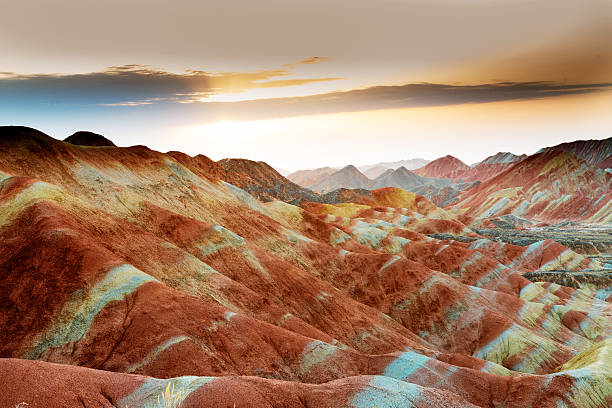
Danxia Mountain.
Local Cuisine and Accommodation Nearby
When visiting the breathtaking Danxia Mountain, indulging in the local cuisine and finding comfortable accommodation can enhance your experience tremendously. Here are some delightful options to consider:
Local Cuisine
-
Danxia Tofu (丹霞豆腐)
This regional specialty is known for its unique texture and flavor. Made from locally sourced soybeans, Danxia tofu is often served stir-fried with seasonal vegetables or in a spicy hot pot. Its subtle taste and firm consistency make it a favorite among both locals and visitors. -
Mushroom Hot Pot (蘑菇火锅)
The area around Danxia Mountain is rich in diverse mushrooms, making this dish a must-try. Served in a bubbling broth, diners can select from an array of fresh mushrooms, tofu, and greens, cooking them to perfection right at the table. The communal aspect of hot pot dining adds to the experience, perfect for sharing with friends or family. -
Nongjia Rice Noodles (农家米粉)
A staple in the region, these rice noodles are typically served with a savory broth and topped with fresh herbs, veggies, and your choice of meat or tofu. The combination of flavors is both comforting and satisfying, making it a popular choice among hikers looking to refuel after a long trek. -
Grilled Fish (烤鱼)
Freshly caught from nearby rivers, grilled fish is often seasoned with local spices and grilled to perfection. Served with a side of tangy dipping sauce, it’s a delightful way to taste the local waters while enjoying the stunning scenery.
Accommodation Options
-
Luxury Stay: Danxia Mountain Resort
For those seeking a touch of luxury, the Danxia Mountain Resort offers elegant rooms with stunning views of the surrounding landscape. This hotel features modern amenities, a spa, and fine dining options, providing a relaxing retreat after a day of exploration. -
Boutique Option: Cloud Valley Boutique Hotel
Nestled near the entrance to the scenic area, the Cloud Valley Boutique Hotel combines traditional Chinese architecture with modern comfort. With personalized service and beautifully decorated rooms, it’s an ideal choice for travelers looking for a unique experience. -
Budget-Friendly: Hostel 123
If you’re traveling on a budget, Hostel 123 provides affordable dormitory and private room options. Located just a short distance from the Danxia Mountain entrance, this hostel offers a friendly atmosphere, communal kitchen facilities, and easy access to local eateries. -
Mid-Range: Yulong Inn
Yulong Inn is a cozy guesthouse that offers comfortable accommodations at a reasonable price. With its welcoming staff and home-cooked meals, it’s perfect for travelers who want a taste of local hospitality without breaking the bank.
No matter what your taste or budget, you’ll find plenty of delicious food and comfortable places to stay while exploring the stunning landscapes of Danxia Mountain.
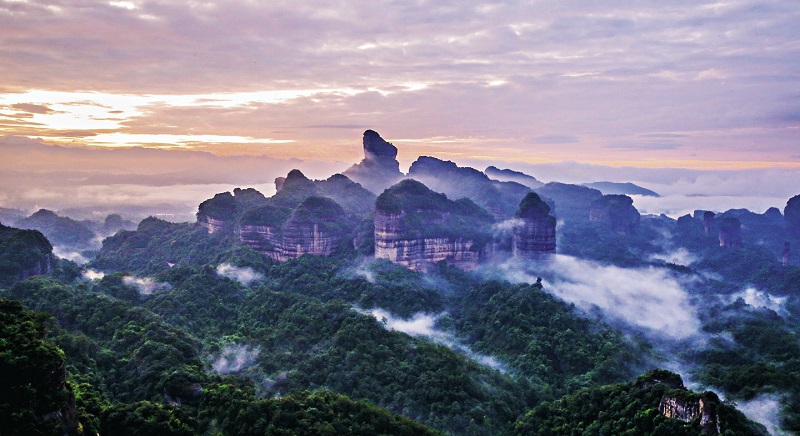
Danxia Mountain.
Frequently Asked Questions
Frequently Asked Questions About Danxia Mountain
1. Is Danxia Mountain suitable for children and the elderly?
Yes, Danxia Mountain can be enjoyed by children and the elderly, but it’s important to assess individual fitness levels. Some trails are strenuous, with steep stairs and uneven paths. While many seniors have successfully hiked the trails, it’s advisable to choose less challenging routes, such as those around Yangyuan Mountain, which tend to be less crowded and easier to navigate.
2. How much time should I plan for a visit?
To fully appreciate Danxia Mountain, it’s recommended to allocate at least two days. This allows ample time to explore both the Elder Peak and Yangyuan Mountain areas without feeling rushed. Each area offers unique views and hiking experiences, so taking your time will enhance your visit.
3. Are there English signs and guides available?
While some signs at Danxia Mountain may have English translations, most informational displays are in Chinese. However, it’s possible to find English-speaking guides or tours that can provide context and help enhance your experience. Consider hiring a guide if you’re not comfortable navigating the park alone.
4. What is the entrance fee and how long is it valid?
The entrance fee to Danxia Mountain is approximately 100 RMB (around $15 USD), with a reduced rate of 96 RMB available during regular periods. Note that prices may increase to 120 RMB during peak holiday seasons. The ticket is valid for 24 hours, allowing you to explore at your own pace.
5. How do I get to Danxia Mountain from the nearest city?
The nearest major city is Shaoguan. From Shaoguan East Railway Station, you can take a bus to Danxia Mountain, which takes about 40 minutes and costs around 18 RMB (about $2.50 USD). Buses are frequent, making it convenient to reach the park.
6. Are there accommodations within the park?
Yes, there are hotels and guesthouses within the park, particularly around the Yangyuan Mountain area. Staying inside the park can save you time and provide easier access to the trails. If you prefer more options, there are additional accommodations available in Shaoguan.
7. What should I wear and bring for hiking?
Comfortable hiking shoes are essential due to the challenging terrain. Dress in layers, as temperatures can vary throughout the day. Additionally, bring plenty of water, snacks, sunscreen, and a hat for sun protection. Don’t forget your camera to capture the stunning landscapes!
8. Is the air quality good in Danxia Mountain?
Generally, Danxia Mountain boasts cleaner air than many urban areas in China, making it a refreshing escape. However, air quality can vary with weather conditions. It’s advisable to check the local air quality index before your visit, especially if you’re sensitive to pollution.
Final Thoughts on Your Trip
As your adventure at Danxia Mountain comes to a close, take a moment to reflect on the breathtaking landscapes and the vibrant culture that envelops this iconic destination. From the striking, uniquely shaped rock formations that tell stories of ancient geological wonders to the invigorating hikes that challenge and reward your spirit, every experience here is etched with beauty.
The clean air, contrasting sharply with bustling urban life, invites you to breathe deeply and appreciate nature’s artistry. Whether you navigated the challenging trails of Elder Peak or found tranquility among the serene temples, the memories you’ve forged amidst the captivating scenery will linger long after you leave.
Remember, Danxia Mountain is more than just a place to visit; it’s an invitation to connect with nature and the history that shaped it. As you venture back to your everyday life, carry with you the essence of this remarkable landscape, and let it inspire your next journey. Adventure awaits beyond every peak—so keep exploring and discovering the wonders of our world!